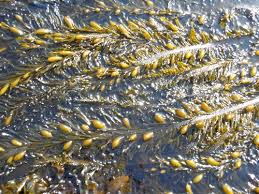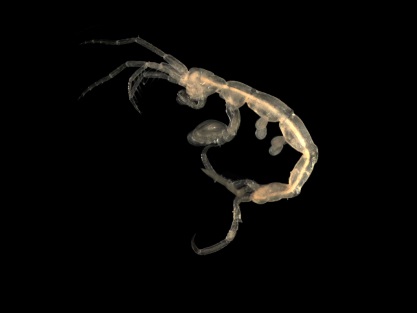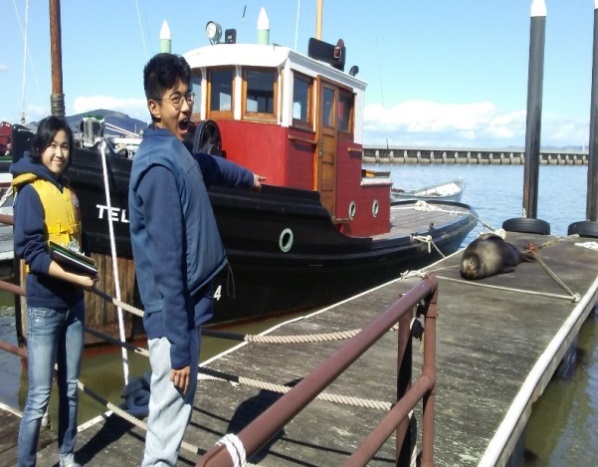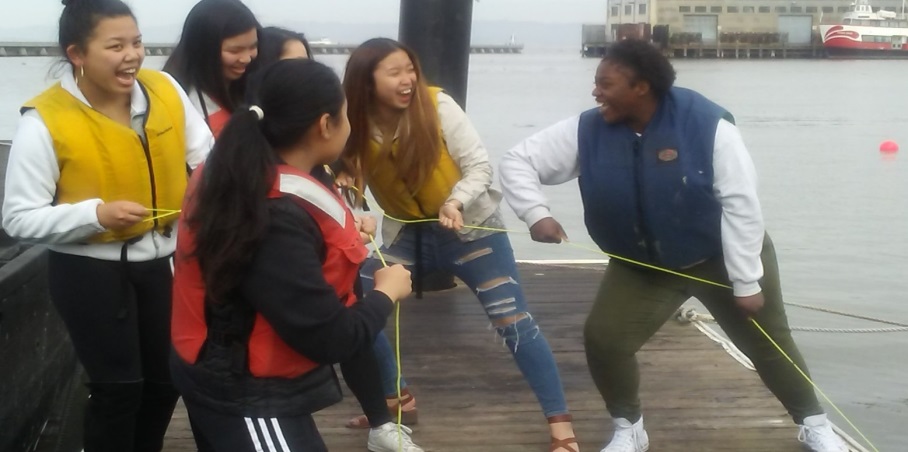The data the students collected over these five years suggest that the Bay’s organisms are greatly affected by changes in water temperature and salinity. They found that during years with heavy rainfall, when the freshwater sits on top of the salt water without mixing, many organisms die off, such as the Strawberry Anemone and the Skeletal Shrimp, because they may have a narrow tolerance range for change and lower salinities.
Students also discovered that when the waters stay warmer for a longer period of time, seaweeds that are usually found in abundance in southern California waters are staying in Aquatic Park Cove all year long. An example of this is the Feather Boa Kelp. The Feather Boa Kelp (Egregia menziesii) is a fast-growing seaweed--faster than many of the others-- so eventually the Feather Boa Kelp will outcompete the slower growing seaweeds in the area for resources, such as space and sunshine.
However, because the shoreline ecosystem is a delicate balance, exchanging one organism for another can have drastic consequences. A prime example is the loss of the Sea Stars along both the east and west coasts due to a virus triggered by warming waters. When the Sea Star population in Aquatic Park Cove was larger, they used to keep the mussel populations in check (Sea Stars feeding on mussels allowed the remaining mussels to grow larger, because they were not competing for space.) Now that the Sea Stars have all but disappeared from Aquatic Park Cove, Galileo students are noticing that mussels are more abundant but smaller.
 Feather Boa Kelp
Feather Boa Kelp Skeletal Shrimp
Skeletal ShrimpIn 2016 Galileo expanded their data collection program by partnering with the Smithsonian Environmental Research Center (SERC)’s “Plate Watch” program, which is based at San Francisco State University’s Estuary & Ocean Science Center in Tiburon, California. The students deployed ten more settling plates to specifically monitor for tunicates, document changes in the marine invertebrate community through time, and monitor for non-native species. The goal of the Smithsonian's Plate Watch program is to collect critical baseline data on marine invertebrates. With the help of citizen scientists, Plate Watch has created an early detection network for non-native species, on the west coast. Galileo students monitor the marine community several times throughout the year by making observations and photographing the plates.
However, the real benefit, at least for the students, is that they are doing “real science” and not just “busy work.” One of the Galileo students shared: “I’m more careful with my observations and measurements than I would be in a regular [classroom] lab, because I know scientists are actually using this data.” And her classmate shared that he discovered that “science happens rain or shine,” and that you need to keep a constant watch around you as you are collecting data, so “wild creatures don’t sneak up on you or invade your working area. “

A sea lion "invades" the students' working area
“Anytime students are given the opportunity to engage in real science, it makes their learning more meaningful. From a practical career education standpoint, we are teaching them marketable field studies skills. They are more likely to land an environmental, marine or ecology internship or job if they can state that they have mastered some field techniques: percent cover, accurate photo documentation, species identification, specimen collection and water quality, to name a few,” offered Lisa Franzen, the Galileo science teacher who initiated this partnership with the park and the Smithsonian.
 Students hauling a settling plate from the Cove Floor
Students hauling a settling plate from the Cove FloorThe education programs we offer at our park generally emphasize maritime history. However, our collection of ships and small craft historically impacted the Bay’s ecosystem during the period they actively sailed the Bay, rivers, and oceans by facilitating the movement of invasive species through ballast water and ship hull fouling. Over 90% of the organisms in the San Francisco Bay are invasive and many have arrived on or in ships. The park has a duty to educate students and the public about the ecological changes that occur over time in the Bay, and what they can do to help protect the health of Aquatic Park Cove and the Bay.
